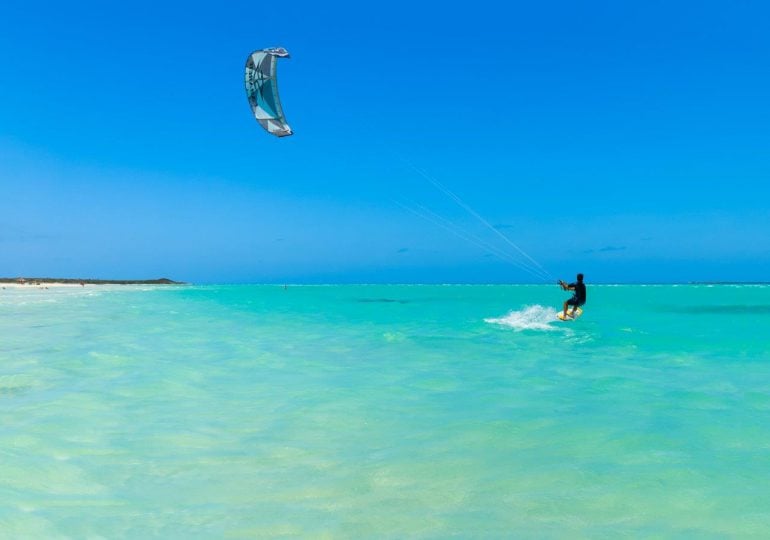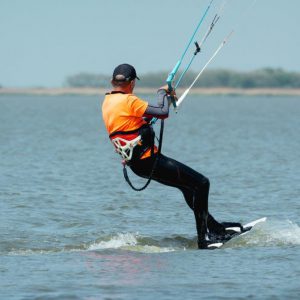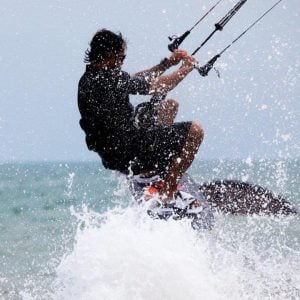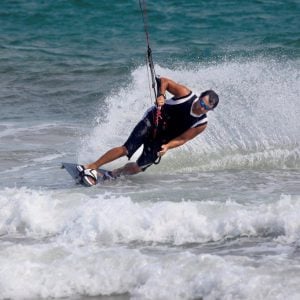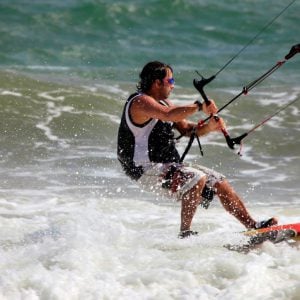Kiteboarding is one of the most exciting water sports to have exploded onto the scene in recent years.
It grew steadily in popularity in extreme water sports circles and has now reached the masses with wider accessibility to camps and lessons, as well as gear and equipment. It’s hard to watch a clip of a kiteboarder catching air off of a cresting wave without aching to get out on the water and try it for yourself. And although these breathtaking clips of experts turning crazy freestyle tricks may make it seem as though kiteboarding is only for a handful of naturally gifted super-athletes, the truth is, with the right training and a little bit of dedicated practice, anyone can get out on a kitesurf board and rock out to the fullest. In this case, rocking out includes having a handle on the gear you need to get the most out of your experience, how much it costs, where to find it, when to buy or rent it, and a whole host of other considerations before you get started.
Let’s break it down for you.
The first thing to know is that there is no need for you to purchase your own new equipment if you have never kiteboarded before.
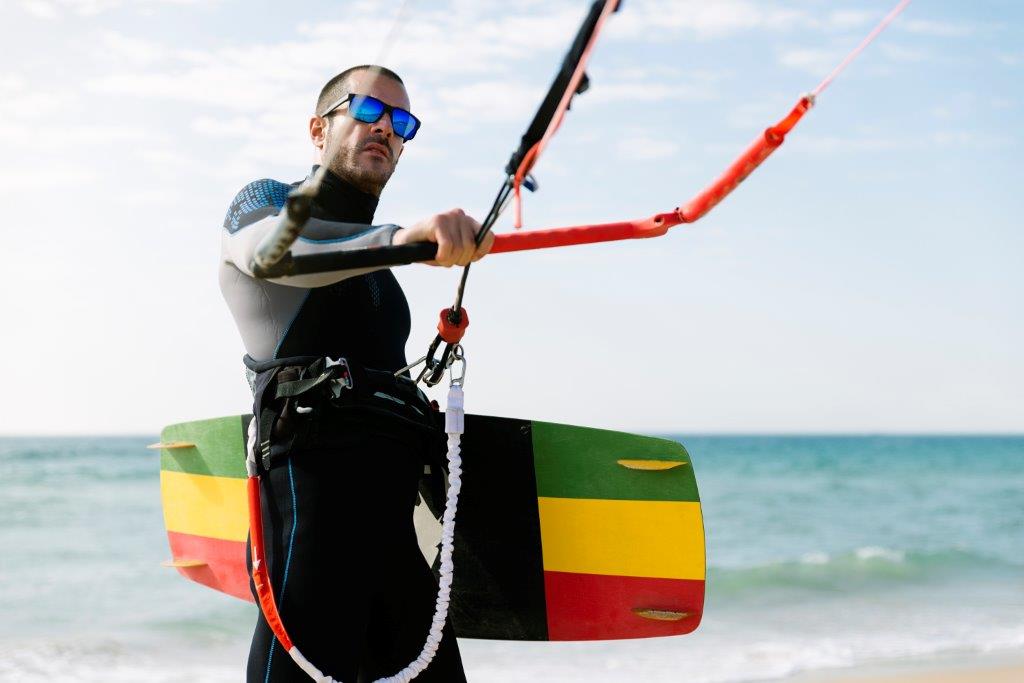
This is a water sport that most definitely requires some lessons and practice. All reputable kite schools and instructors provide everything you need in terms of your kiteboarding kit. The experience of taking lessons is not only invaluable in teaching you the fundamentals of technique and safety, but also in acquainting you with all necessary gear and equipment, allowing you to gauge what feels comfortable for you, so you’ll know exactly what’s best when it finally comes time to invest in your own kit.
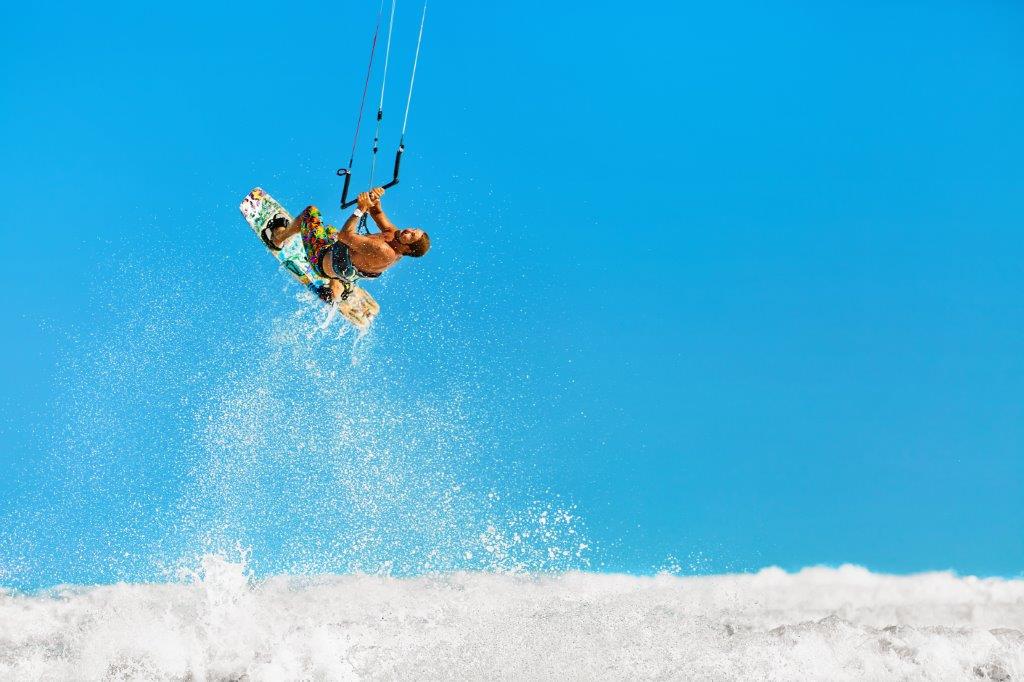
Kiteboarding is unique in the world of water sports but nonetheless bears similarities to other activities such as surfing, wakeboarding, sailing and knee boarding. Perhaps its most distinguishing characteristic is how much control you have out on the water once you have acquired the skill. Experienced riders know how to monitor and navigate wind currents as well as tides, and as a result, are able to modulate their speed and direction at will and also catch amazing air.
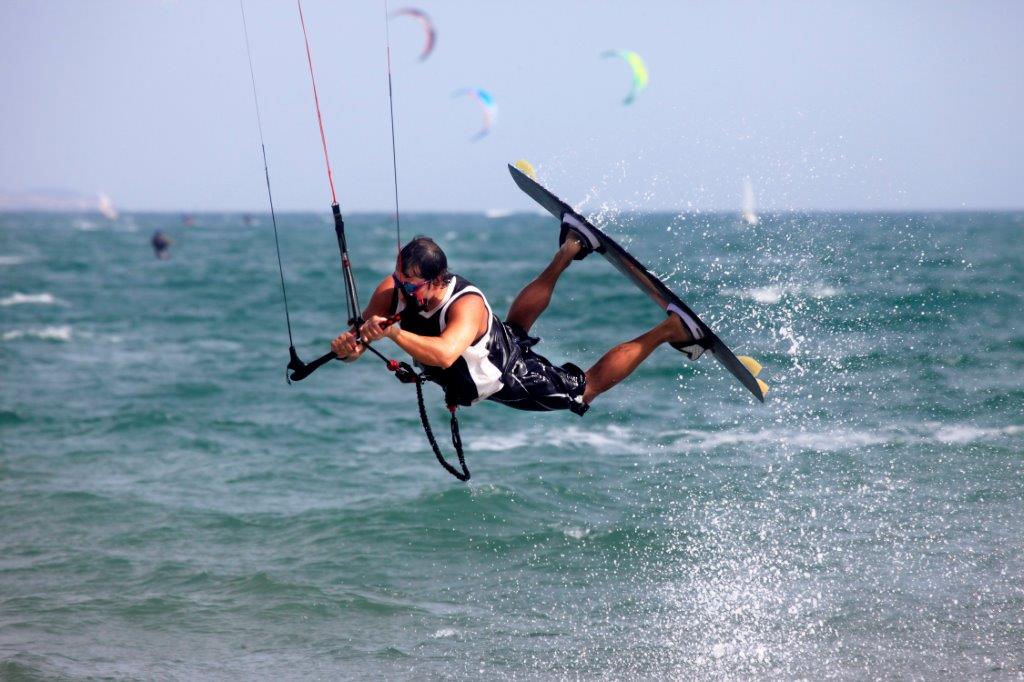
This control is achievable with the kitesurf board, the kite, and the associated connecting gear including the bar and lines, as well as the harness. All of these engineered together as one allow you to tap into the power of both the wind and the water at the same time. The more practice you get, the more you’ll be able to experiment with speed, freestyle tricks, and trying out incredibly cool things like “down winding,” which is when you follow long wind currents along a stretch of coastline.
So, what other equipment do you need besides the board and kite?
To round out a full kiteboarding kit, you’re also going to need a bar strap kit, a harness, a safety kit including a leash and knife, safety vest, wetsuit, and finally, a helmet, especially for those just getting started. Let’s break each of these down a bit more so you understand how each of them work in conjunction with the others.
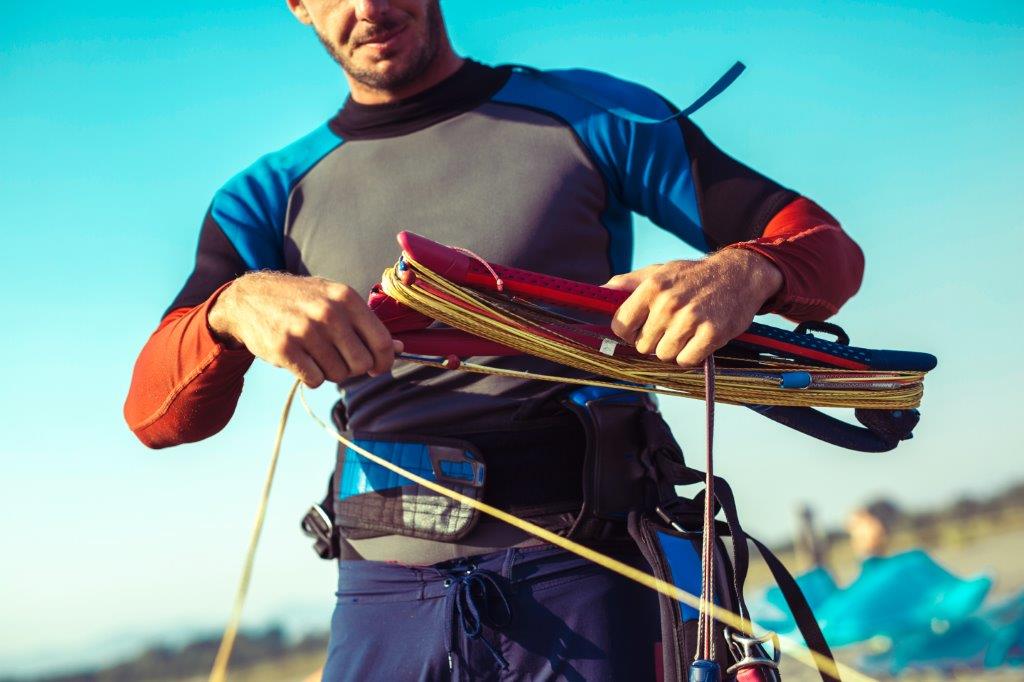
When selecting a kite (something your instructor will help you with when you start), you factor in a number of inputs, not the least of which are the size and weight of the individual, the kind of board you’re using, and critically, the nature and strength of the wind conditions where you will be kiteboarding. For most beginners, a larger board works best, as they provide more surface area, which allows you to develop your comfort level, balance and coordination at your own pace. Your feet lock into holsters on the board itself.
Then you have your standard bar and lines, which are ultimately selected based on the size and nature of the kite itself. You, the awesome kiteboarder, will utilize the bars to steer the kite. Your waist harness connects you to the bar and lines, providing the means for both support and steering control. (Beginners often opt for a seat harness to get going, which offers additional support as you build confidence in the early stages). Be sure to speak with your instructor and ask for their recommendations as to what kind of harness you should use based on your size, equipment and level of comfort and experience.
To round out your kit, you’re going to need the safety essentials, which are primarily comprised of a safety leash and a safety knife, as well as a life jacket.
When you’re first getting going, you will be wearing a helmet. Once again, you will have ample opportunity to review all safety protocol with your instructor when you’ve landed on the right kite school for you. Lastly, this is one water sport where a wet suit can come in very handy. It’s more or less a must-have, and even if you don’t require a full-body wet suit, your instructor will be able to guide you with what you do need, which may just be a cropped wet suit, sometimes referred to as a “shortie.” Taking lessons and learning what works for you over time will make it a snap when it comes time to start looking at customizing your own kit and will ensure you know not only know how to use your gear, but also how best to prep it and maintain it.
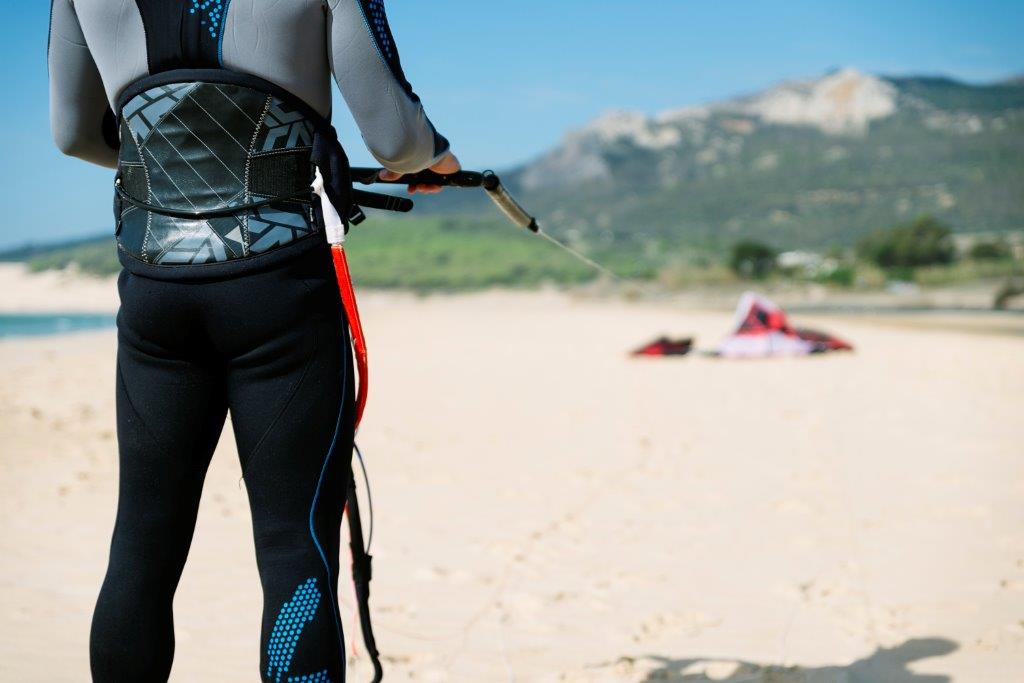
Now that you have some knowledge on the basics of what you need to get going, there’s nothing to prevent you from taking the leap and trying for yourself! Lessons range from a reasonable $75-$125 per hour, and most all schools and instructors offer longer sessions (typically around three hours) that provide a greater value, typically coming in at around $250.
There’s endless upside to learning the art of kiteboarding and we couldn’t recommend it to our fellow water sports enthusiasts any more highly.
Kite Boarding Photos
- July 19, 2021 - July 19, 2021
- October 19, 2019 - October 19, 2019
- October 18, 2019 - October 18, 2019

